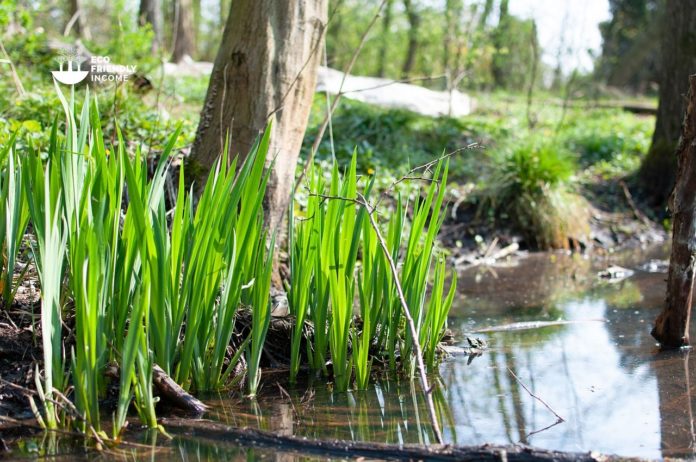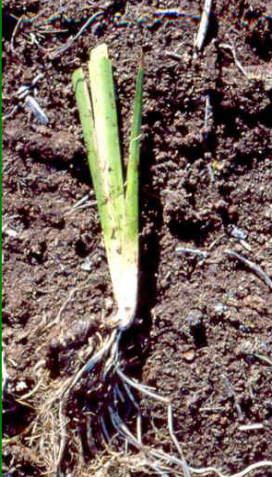It’s one of those wild plants you’ve probably seen so many times without realizing. They’re often seen growing along roadsides in the boreal forest, identifying a sweet flag plant (Acorus americanus) is pretty easy.
Acorus americanus is a perennial aquatic plant with long ribbon-like leaves. Its other common names are sway or muskrat root.
It has psychoactive and medicinal properties, which have been of interest in Native American and Chinese medicine.
As a tree planter working in eastern Canada, I’ve had the opportunity to see this plant many times.
By curiosity, I have harvested it but when I forage for this herb, I only pick it sustainably, and I think everyone also should.
If you go out picking all the sweet flag plants near you, you don’t really give them a chance to flourish.
Idea: A great thing you can do instead is to bring some home and propagate them yourself.
Here’s what you can expect to learn in this article:
- Sweet Flag Picking Season
- How to Identify Sweet Flag
- Where You Can Find it
- How to Harvest it Sustainably
- How to Use & Store it
- How to Propagate Sweet Flag
Let’s get started!
Sweet Flag Picking Season
Sweet flag rhizomes are the most useful part of the plant. The best time to harvest them is early spring before new growth starts or during Fall before the first frost.

Since they grow in water, harvesting rhizomes is gonna be a messy job but hey that can be a lot of fun too.
How to Identify Sweet Flag (Acorus americanus)
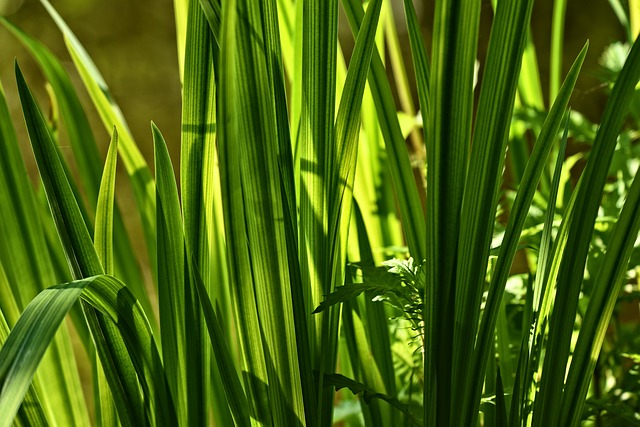
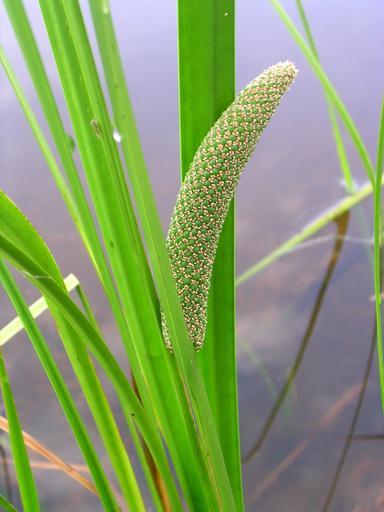
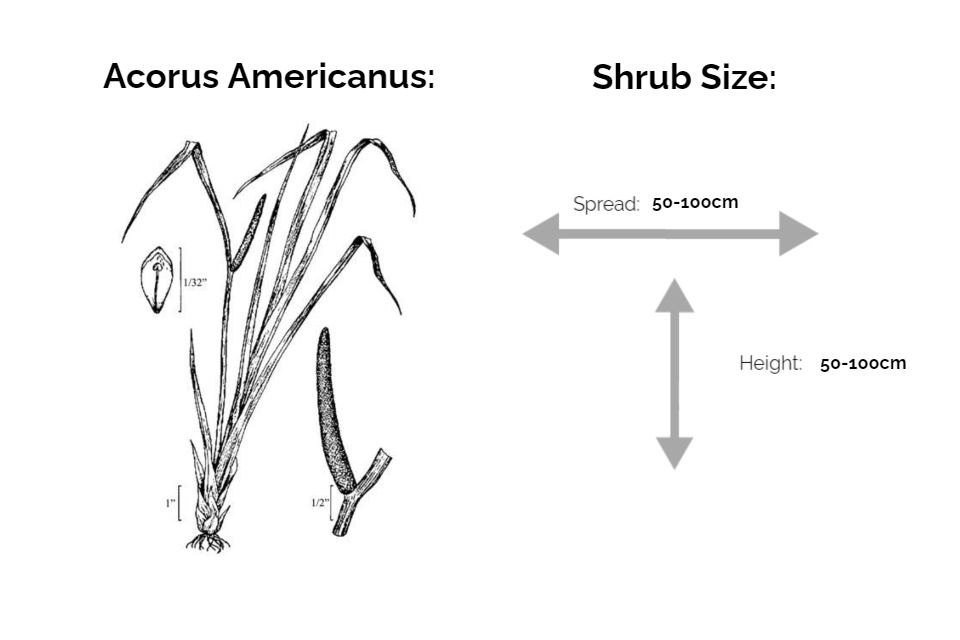
Sweet flag (Acorus americanus) is a deciduous shrub from North America native to humid zones. It likes to grow in bulky colonies and looks quite similar to cattails before flowering.
Flowers
Their flowers are tiny, brown to yellow-colored, and cover a cylindrical finger-like stem. Usually 4-10cm each, they sprout on stiff, green-like spathes.
Leaves
Sweet flag leaves are linear-shaped, have entire margins, and grow in a basal arrangement. They grow from 50cm to 2m in height each, with around 1.5cm in width.
If you look closely, you will see an off-center vein running vertically on each leaf. The base of each leaf is usually white with sometimes a red tinge.
2-6 additional veins run parallel to the main off-center vein, which is visible when the leaf is held up to the sun.
Sweet flag leaves have a sweet fragrance when broken.
Where You Can Find Wild Sweet Flag
You can find Sweet flag growing in mucky shorelines and shallows. It’s an aquatic plant so you’ll often find it growing in at least 1 foot of water.
It’s a native plant to almost all of Canada and the northern United States. Here’s a map of where they grow: USDA PLANTS MAP.
If you want to find sweet flag, your best bet is to look near lakes, marshes, streams, and rivers.
Sweet flag (Acorus americanus) likes to grow near the following plants:
- Broadleaf Cattail (Typha latifolia)
- Yellow Pond Lily (Nuphar lutea)
When you see any of these, there’s a good chance sweet flag is also growing somewhere close.
How to Harvest Sweet Flags Plants Sustainably
Since this plant grows in water, it will be a messy ordeal. You’ll be like a rice cultivator feet in water for a moment.
My personal method for picking sweet flag sustainably:
- Pick a plant that has enough neighbors (leave the single plants alone).
- Push the other leaves aside and give the plant a tug.
- Reach under the water and dig around the rhizome, roughly 1 foot.
- Give the plant another tug, it should come out easier now.
- Move on to a new colony.
It’s simple, taking one plant per colony will minimally harm the patch, and it’ll continue to thrive.
You might have to cut the thick rhizomes with a knife to separate them. That’s fine because the plants can actually continue to grow when they’re divided.
How to Use & Store Freshly Picked Sweet Flag Leaves
Sweet Flag Uses
Tribes in the plains of North America consumed Acorus in decoctions. Its primary purpose was to enhance mental vigilance in preparation for purification rituals.
Additionally, it was sometimes smoked, mixed with other plants, in the peace pipe.
The Pawnee people had songs in honor of the sweet flag plant, and the Sioux people a dance.
Sweet Flag Medicinal Properties
- Antioxidant (Prevents or slows damage to cells)
- Antiseptic (Slows or stops growth of micro-organisms)
- Aperitive (Stimulates apetite)
- Aphrodisiac (Stimulates arousal)
- Carminative (Prevents formation of gas in intestines)
- Emmenagogue (Stimulates or increases menstrual flow)
- Insectifuge (Repells insects)
- Sialogogue (Promotes secretion of saliva)
- Stomachic (Assists digestion)
- Sudorific (Induces sweating
- Tonic (Restores or improves well-being)
- Vomitive (Can cause or induce vomiting)
How to Prepare
It’s recommended to take sweet flag only in small doses, from fresh roots. The taste is quite bitter, and in too high doses will cause vomiting and irritation.
- You can cut fine slices of the root, like you would cut ginseng, and place them on your inner cheek, sucking the juices without chewing. This method is useful for sore throat and coughs.
- You can make a decoction (3g of root per 250ml water) mixed with other plants like pearly everlasting, marsh mallow, licorice or ormus. It renders it a bit more drinkable
- Dried sweet flag, crushed into powder is good as an antiseptic and scarring agent. In a extreme case you can mix with clay or honey and spread on a wound.
- Extract its essential oils, then you can dilute it 90% in vegetable oil to make a good massage oil.
How to Dry & Store Them
To conserve for later use, sweet flag rhizomes need to be dried and stored properly.
First, you want to air dry them. Cut them up in slices and place them somewhere to dry.
At home what I did was build a drying rack for herbs and mushrooms. Here’s how I did it:
- I built three rectangular frames out of 1×3 wood.
- I bought some patio door screener, cut them to the size of the frames and stapled them on.
- Built some legs for the frames and I just stack the frames on top of each other.
Pretty simple, this way I got three levels on the rack to dry stuff. I leave it by a well-lit window and air dry my herbs there.
The area needs to be well lit but not have direct sunlight for too long, this could bleach your harvest.
It can take anywhere from a few days to a week to fully dry. Then you can use a pestle and mortar to grind them into powder.
Finally, place the powder in a sealed mason jar, stored away in a cool dark place.
How to Propagate Sweet Flag Plants (Acorus americanus)

Hardiness Zone: 2-6

Soil Type: Clay, peat, rocky soils.

Water: High. Grows in wet soil.

Exposure: Full Sun to Partial Shade.
Sweet Flag (Acorus americanus) is a perennial shrub hardy up to zone 2. A sweet flag shrub should be planted in wet clay or peat soils. You should ensure the soil is always wet or flooded.
Commercial Value
Propagating Sweet flag is possible and it has some potential commercial value. The leaves are fragrant and the roots hold medicinal properties.
Additionally, it’s a sturdy native plant that is useful in landscaping for soil stabilization. They are great creekside shrubs that keep erosion at bay in private or commercial landscaping.
Growing and propagating sweet flag is possible if you have the right environment. Let me show you how:
The Best Way to Propagate Sweet Flag Plants:
Division
Sweet flag can be propagated by root crown division and by dividing the rhizomes.
The best time to take sweet flag rhizome cuttings is late Fall when the plant is dormant.

Crown Division
- Find a wild patch and identify the largest plant.
- Try to pull the plant out, if there’s resistance, look at where the roots go and try to dig them out.
- Once you have the plant out, you can split the root crown by hand or with a sharp knife from top to bottom.
- Make sure both sides have enough roots before you divide.
- Now take a good look at your divided plants, remove any dead or diseased foliage.
- Repot the two individually and water thoroughly until they are established.
Dividing the Rhizomes
Dividing the rhizomes is similar to dividing the crown, but you’ll be taking the new nearby shoots instead.
- Find a large plant and inspect its surrounding roots.
- Some roots will go horizontally and new shoots come out further down, those are the rhizomes.
- Use a digging spade to dig 3-4 inches down to find the rhizomes.
- Lift a rhizome strand out of the ground, and cut it to separate the new shoot from the colony.
- Store the shoots in a moist plastic bag for transport.
Rhizomes taken at this time of year will need to go through stratification to successfully sprout.
Overwintering
- At home, get some pots ready for the winter dormancy. For fuller plants, you want at least 2 cuttings per pot.
- Fill your pots with horticultural grade vermuculite, or alternatively metro mix 510 growing medium.
- Water them thoroughly and then place them in a cooler or minimally heated hoop house.
- Let them rest for 2-3 months, going through a cool period like this will help break dormancy once spring arrives.
When your sweet flag cuttings have gone through this stratification period, you can now take them out in warm spring weather or bring them into a warm greenhouse.
Within one to two weeks fresh leaves should start to appear on your cuttings.
From there, within six weeks, the sweet flag rhizome cuttings should have developed into strong liners. These plants themselves can be a great source of rhizomes in the future.
Any other plant that’s grown to be sold commercially should be transplanted into 1 to 2-gallon pots. Within a year they’ll grow large enough to be sold in stores.
Conclusion
If you live in North America and sweet flag is a native plant to your area, I highly recommend using it as a landscaping plant.
Truth is, many of the landscaping plants we buy at garden centers end up being invasive. This means they spread to forests and compete with the native plants.
This can lead to some species getting completely wiped out in areas.
This is why I encourage people to plant and propagate sweet flag in their area if it’s a native plant.
I hope I covered everything you need in this guide to serve that very purpose.
Let’s get propagating!

